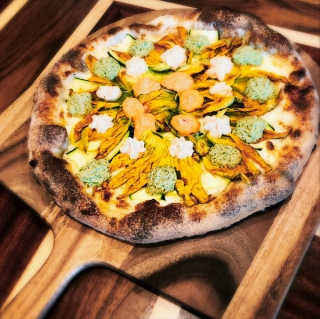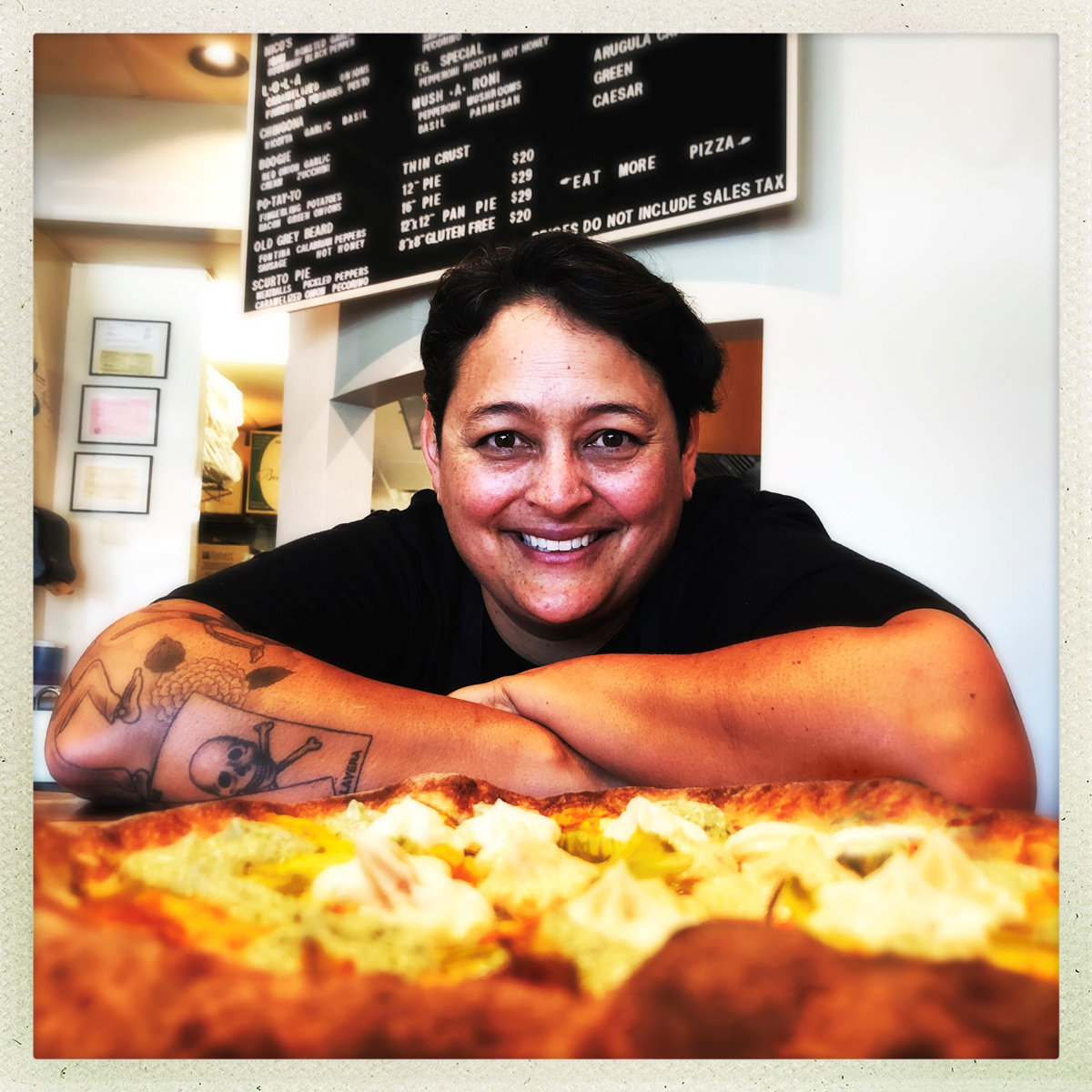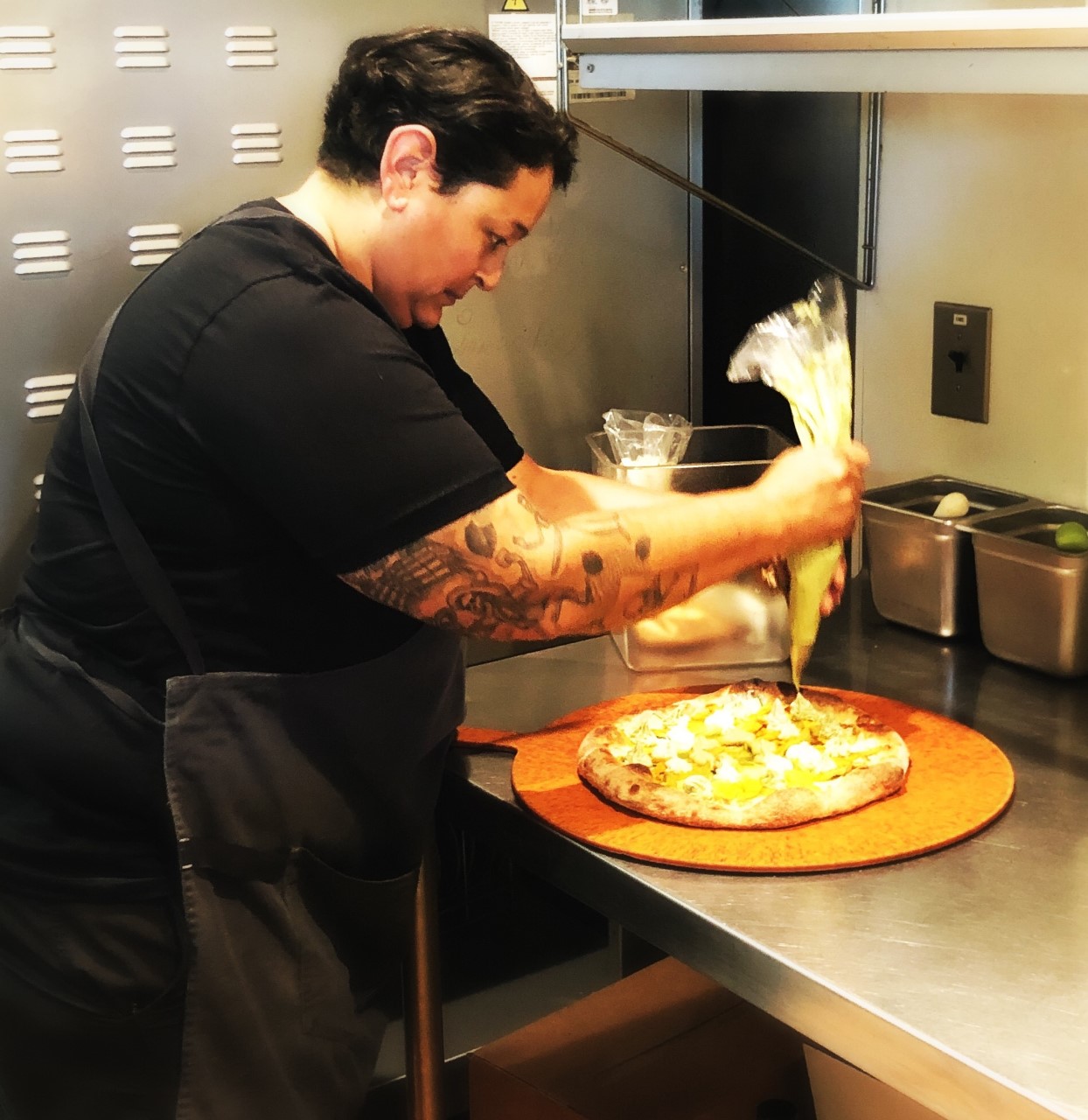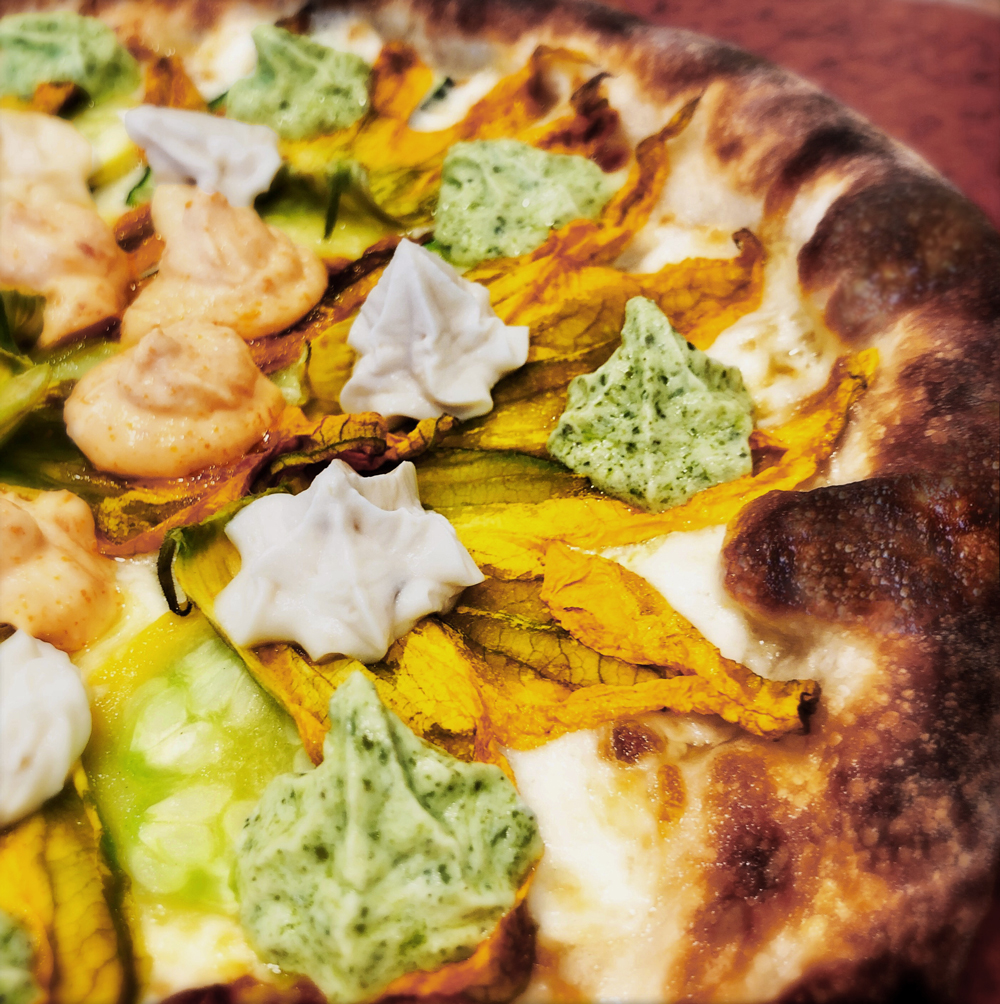
A Tutorial on All Things Pizza
01 May 2023Beyond pizza basics with award-winning California pizza chef Leah Scurto.
By Lisa Parrish, GMC Editor, and Leah Scurto, chef and co-owner of California Pizzaleah
Feedback & comments: This email address is being protected from spambots. You need JavaScript enabled to view it.
Pizza is one dish nearly every culinary student has tasted. The pie has played into American culture since the students were children, no matter the age of the student. The first pizzeria opened in New York City’s Little Italy in 1905; pizza has been a staple of American culture for nearly 125 years.
Like all culinary lessons, teaching pizza basics is the first priority. Once covered, instructors can take deep dives into different options in styles, flavors, ingredients and baking techniques that transcend the simple pie students knew in their childhood to a dish with collaborative flavors and textures that is a delicious, high-quality meal.
 I turned to nine-year US Pizza Team member, Chef Leah Scurto, co-owner of Pizzaleah in Windsor, Calif., to gain advanced pizza knowledge. The pizzaiola was recently featured on Hulu’s “Best in Dough” and she was also selected as a Real Maker by Real California Milk. Read our interview below which centered on the latest pizza styles, toppings, cooking techniques and unusual dairy uses.
I turned to nine-year US Pizza Team member, Chef Leah Scurto, co-owner of Pizzaleah in Windsor, Calif., to gain advanced pizza knowledge. The pizzaiola was recently featured on Hulu’s “Best in Dough” and she was also selected as a Real Maker by Real California Milk. Read our interview below which centered on the latest pizza styles, toppings, cooking techniques and unusual dairy uses.
Click here to see a video featuring Chef Scurto describing her tricolor ricotta pizza and her skills in creating complementary toppings.
******************************************************************************
Can you explain these pizza styles including shapes, doughs and flavors?
New York style
New York style pizza is going to be a larger size, round and often hand-tossed. The dough is cooked until golden brown – crispy on the outside with a soft chewiness in the middle. The dough is usually made with a high-gluten, malted flour. If a chef is using unmalted flour, the dough may have a small amount of sugar or honey added for yeast food or as a browning agent. Usually, a New York dough will contain olive oil. The pizzas are baked in a gas deck oven at around 550F degrees and can take anywhere from seven to nine minutes to cook.
Chicago style
There are two main pizza styles in Chicago. There is the Chicago deep dish and there’s the Chicago tavern style. Everybody I know in Chicago says the deep dish is for the tourists and the tavern style is for the locals.
- Chicago deep dish uses round pans with a high edge. The dough is pressed against the pan walls and then layered with cheese, sauce and toppings. The dough often contains some sort of butter or shortening to give it a flakey texture. Then there is this twist they sometimes call the stuffed deep dish, where there is another layer of dough on top. These deep-dish pizzas are always finished with the sauce and baked in a gas deck oven. Deep dish pizzas will take anywhere from 30 to 40 minutes to cook, often at a lower temperature than the New York style pizzas.
- Chicago tavern style is a very thin, round pizza with the toppings and cheese pulled all the way to the edge, so there is really no crust. It is thin and crispy and cut into squares. Some people call it tavern cut; some people call it party cut. Tavern style was born out of the bars and taverns that would have something for the patrons to snack on that wasn’t as filling as your typical deep-dish, so everybody had room to still drink more beer. The dough is often of a lower hydration and rolled out with a rolling pin or dough sheeter to help achieve that super thin texture.
Detroit style
Detroit style pizza is a regional specialty cooked on rectangular steel pans with tapered edges. The pans look like old automotive steel pans. The signature of the Detroit style pizza is the cheese crown, or frico, created when the cheese caramelizes as it melts down the side of the pan. The dough is pushed out to the edges of the pan and left to rise, so it is anywhere from an inch to ¾ inch thick. Cheddar or provolone work great to create that crispy cheese crown.
Often, there is no edge or crust. It's a pizza that can either be cooked raw or parbaked. Depending on the cooking method, you will achieve a slightly different cheese crown. The sauce can be applied either before or after, but Detroit red top means the chef ladles two racing stripes of the hot pizza sauce across the top. Typically, the dough uses slightly lower protein flour and contains sugar and oil.
Roman style
There are two different styles of Roman pizza, pizza in teglia (in a pan) and pizza alla pala (without a pan), and you can essentially use the same dough for both styles, but you treat it differently when you make the pizza.
The alla pala style is stretched out on a long wood board. If a chef makes Roman style pizza in a pan, pizza in teglia, she will not let it rise. Typical pan-style pizzas - like the Sicilian, the Grandma, the Detroit – allow the dough to rise in the pan, but the Roman style is done in a way that you would never let it rise. You stretch it out and cook it. It should have that oven spring and rise without having been left in the pan to achieve it.
Roman style dough is more hydrated than typical pizza dough with upward of 80 percent hydration. It's very light and airy with a texture that will have a nice crunch because of the higher hydration. There's a whole technique just to mixing that dough properly, using a spiral mixer to aerate. You’re also using different flours than you would with making American pizza dough. For American pizza dough, you're often using a high-gluten malt flour but with Roman dough you’re using a double zero or a zero-type flour and you are not putting any sugar into it.
Sicilian style
Sicilian style dough is very similar to New York style dough but a little more hydrated. With Sicilian dough, you push it out in a pan and let it rise. It should be thick with a spongy and fluffy dough texture. Some people let it rise for eight hours. Oftentimes, in a restaurant production, you will leave it to rise overnight and then come in the morning and parbake them. Some parbake them with sauce, some do not. But it's a traditional thick-crust pizza, although not a deep dish. People often use the words ‘deep dish’ for anything that's made in a pan, but that is incorrect. For Sicilian style pizzas, I'm constantly correcting people because I don't want them to say, “deep dish” just because it's made in a pan.
How does the pie’s shape play into topping and cheese selection?
This depends on the style of pizza. For example, in a Sicilian pizza I always use fewer toppings because they are parbaked. Sometimes you run into problems with too many toppings; it prevents the cheese from melting correctly. That is a problem I see people run into periodically.
A master pizza maker can create the same pizza in any form. The only exception is deep dish because it is stuffed and everything's cooked for 30 minutes or more. I personally do a lot of post-baked toppings, regardless of the style I am making. I like to use fresh ingredients. If you have the knowledge and experience, you can make any pizza with any style of dough.
 Are you seeing the plant-based topping trend in your business? How do you choose your toppings?
Are you seeing the plant-based topping trend in your business? How do you choose your toppings?
I don't personally use alternative meat products and part of the reason is I'm married to a born-and-raised vegetarian and she never wants it. I prefer to showcase vegetables and dairy. Tell me what you want, and we will put it on a pizza. We will roast it, sauté it, puree it, use it fresh - however you like!
I'm in California and I am super lucky. It's like I get to cherry pick the freshest produce and pair it with the highest quality California cheese. With year-round farmers markets, we always have great selection of fresh produce and California dairy. There are also hot houses and everybody's growing everything. I am so lucky.
I also love to use fruit on my pizza: figs, peaches and apples are my favorite. The fruit also pairs well in plant-forward pizzas with California cheeses.
Can you explain how you use dairy products as toppings? How do you choose different products?
For me, it's all about flavor pairing. When I'm building a pizza, if I'm using a vegetable or a protein, I will find a cheese that complements it perfectly. I think California cheeses adds great flavor to the pizzas. I love hard cheeses and I throw them into the Robot-Coupe to achieve a grated, chunky texture. It's great for a finish or to toss with arugula and top a pizza. Our special right now has pecorino cheese, but we also like to use Valley Ford Estero Gold Reserve Cheese. That has a similar texture to the pecorino. I like to pulse it in a Robot-Coupe for a crumble effect as opposed to grading it.
I also use soft- or a semisoft cheeses because they offer different textures. You can add different textures to the pizza by using cubes of semisoft cheese placed on the toppings as opposed to underneath. Ricotta can be used in multiple different ways. It could be piped on or spread on top. On a Roman style pizza, ricotta can be used as a creamy base after it’s parbaked but before the toppings are added.
***************************************************************************
The California Milk Advisory Board’s 2023 Real California Pizza Contest is open until May 21,2023. The fifth annual search for the best pizza recipes using Real California cheeses. Click here for details.
Click here for a previous Gold Medal Classroom story focusing on selecting umami-rich toppings to create delicious pizza pies.
Photos courtesy of Real California Milk.
